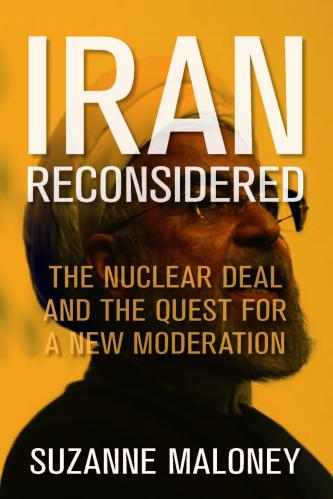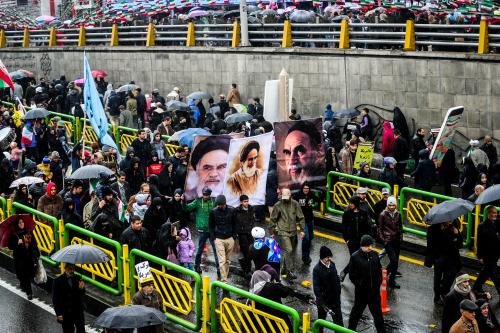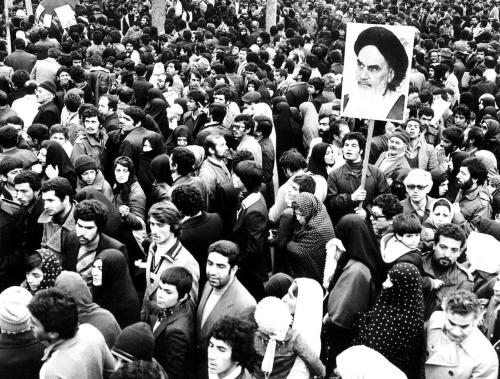Iranian Foreign Minister Javad Zarif’s recent gambit paid off, but his attempt to be a bridge between Tehran and the West has become virtually impossible in the Trump era, writes Suzanne Maloney. This piece originally appeared on ForeignPolicy.com.
The quick reversal of the surprise resignation of Mohammad Javad Zarif, Iran’s smooth-talking foreign minister who brokered the 2015 nuclear deal, has calmed a brewing crisis in Tehran, but only temporarily.
Domestic critics of Zarif’s engagement with Washington and the West may have cheered his threatened retreat. However, a precipitous decline in Iran’s stock exchange, rumors of a walkout within the ranks of the Foreign Ministry, and an impromptu public defense from Iran’s president underscored that the theocracy could ill afford a public rupture within the regime at a time of epic U.S. economic pressure. Zarif’s letter of resignation was rejected by President Hassan Rouhani on Wednesday. And that may have been Zarif’s goal all along.
Zarif’s power play seems to have paid off—he returned to his duties on Wednesday with his trademark Cheshire cat grin, buoyed by copious homage from the rest of the establishment. However, the deep angst among the political establishment about the country’s future course remains fresh, and Zarif’s prospects for the diplomatic rehabilitation that he was charged with advancing in 2013, when he was tapped to lead the Foreign Ministry, appear less auspicious than ever.
Indeed, Iran’s most skillful silver tongue has been challenged as he navigates the whiplash effect of U.S. President Donald Trump’s administration’s strident hostility toward Tehran, which culminated in the administration’s May 2018 decision to withdraw from the nuclear accord and reimpose far-reaching sanctions on Iran and its prospective business partners.
The proximate cause of Zarif’s shock move was his exclusion from a meeting with Syrian President Bashar al-Assad, who recently visited Tehran for the first time since the ruinous conflict in Syria erupted eight years ago. Assad was greeted with an affectionate embrace by Iran’s ultimate authority, Supreme Leader Ali Khamenei, and met with Rouhani along with a host of other senior officials. Reports circulating on social media indicate that Zarif was neither informed nor invited to these sessions. The snub compounded the foreign minister’s frustration, evident in recent public appearances including a testy exchange at the Munich Security Conference earlier this month, in trying to project confidence in Iran’s ability to stay the course even as this strategy fails to insulate the country from the brunt of U.S. sanctions.
As ever, Zarif chose his moment with an eye toward public consumption, announcing his resignation in a late-night Instagram post, yet another dexterous use of social media on behalf of a system that has sought to filter or ban most such tools from use by ordinary Iranians. Predictably, Zarif’s public brinkmanship sent his allies and admirers scrambling to persuade him to stay—or more accurately, to persuade Khamenei that the system cannot do without its most effective diplomatic envoy. The gambit succeeded, offering further proof that no one knows better than Zarif how to use a meme to his tactical advantage. His quiet talents for navigating the intricacies of Iranian domestic politics and maintaining the confidence of Khamenei have always been underestimated.
But public flattery doesn’t change the realities of the power structure in Tehran. Zarif is no more the paramount voice on Iranian foreign and regional policy today than he was on Monday, when his usual place in the reception line was occupied by the Quds Force commander Qassem Suleimani, the thin tip of the Iranian spear in Syria, Iraq, and elsewhere across the region.
Nor does Zarif’s retention of his post signal a meaningful shift in the balance of power within the Iranian system. Divisions over ideology and strategy have always existed within Tehran, but those like Zarif and Suleimani who have devoted their lives and careers to the revolutionary state have always been bonded by a shared commitment to its preservation. The infighting within the establishment is concerned with Iran’s tactics, not objectives. All crucial decisions—such as whether to continue adhering to the nuclear agreement—reflect the product of consensus among the elites.
Iran’s adherence to the nuclear deal has been in doubt since the U.S. withdrawal from the agreement; the core argument against an explicit Iranian abrogation is that it would achieve very little in terms of mitigating the existential crisis that the long-term imposition of damaging U.S. sanctions poses. And it would come at some cost, in terms of European reprisals. (Most European leaders remain committed to the deal.) The longer that this crisis persists, the more likely it is that Tehran could take some counterproductive action to jeopardize the deal. If and when that happens, it will be done with Zarif’s blessing, not despite him.
Iran’s approach to the world has always been an ensemble performance, not a solo act, and the conductor’s baton remains firmly in Khamenei’s paranoid grip. In that collaboration, Zarif has played a vital role for the theocratic state, one that he has raised to an art form over the past two decades as a kind of mutually vital interlocutor trying to reconcile Iran’s revolutionary ambitions with the demands of the international community. It was always a precarious position, one that left him vulnerable to critical accusations of insufficient loyalty to the Islamic system—but today the balancing act is virtually untenable.
Absent some evidence of flexibility in Washington’s stance, there is simply no diplomatic exit strategy from the predicament in which Tehran finds itself. Nor is there a negotiation that can secure adequate substitutes for the trade and investment that Iran sought in signing on to the deal in 2015.
Zarif has been useful for two primary reasons: his knowledge of the U.S. system and his skills as a negotiator. But both of these assets proved insufficient to managing the Trump era, which has been characterized by breaking with longstanding U.S. policies, not adhering to them. For all his vaunted diplomatic skill, Zarif can now neither deliver the fruits of international engagement nor assuage the theocracy’s external critics.
That changes his role, but it doesn’t diminish his significance. Like many Iranian politicians, Zarif has always been at least as important as a symbol, both internally and externally, as in his role as a statesman. His success reflects the aspirations of many Iranians for a more respectable place in the international community, and to his counterparts around the world, his presence bolsters hopes for a more civilized decision-making calculus from the Islamic Republic. Zarif’s symbolic value is more important than ever today, even if its realization seems more distant than ever.






Commentary
Iran’s foreign minister stays on—But with a difficult mandate
February 28, 2019